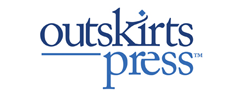Behavioral Based Interviews
What is a behavioral based interview? It is based on the principle that past behavior is the greatest predictor of future behavior. How is this determined in an interview? It goes beyond matching skills and moves in to matching the needed competency that may include those skills. You may not know which type of interview you are going to be faced with, so you’d better be prepared for both. It will usually be the larger and more structured companies that will use behavioral based questions.
At first glance, the types of behavior based questions that are typically asked can be a little intimidating. They include inquiries like, “Tell me about a time when you had to change your point of view to take in to account changing priorities” or “Describe a time when you had to confront your boss on a sensitive issue. How did you handle it?” Or possibly, “Give me an example of a conflict that arose between you and a coworker. How did you resolve it?”
So instead of specific skill questions like, “Can you use the XYZ software?” you might hear the question, “Give an example of how your ability to use the XYZ software was an asset to the department.” The answer to the first inquiry would show skill; the answer to the second would show competency. The difference is subtle, but important to know when developing answers to behavior based questions.
Prep for the behavioral interview is almost identical to the prep for the skill side of the interview. In the skill prep, we used a RAP sheet. We are going to spell that backwards now and use a PAR sheet to prepare for the behavioral interview. Think of it as something that will put you ‘on par’ to get the position. Start with a three column sheet just like the RAP exercise.
PAR stands for PROBLEM or PROFICIENCY/ACTION/RESULT, which will be your three column headings. When we started the RAP exercise, we made a list of RESPONSIBILITIES. You will now make a list of past PROBEMS you have had or PROFICIENCIES (or competencies) that you have shown. Use the list of behavior categories below to seek out situations in your work history that highlight these proficiencies. Be methodical and go back position by position and think about situations you’ve encountered and compliments you have received based on problems you’ve solved. This is not a time to skim lightly through your brain; dig deep. Also, go through your resume and your RAP sheet to find situations that demonstrate your proficiencies and put them on this list. These things will more than likely be situational as opposed to skill based.
Now place each PROBLEM/PROFICIENCY on the PAR sheet one at a time and draw it across the page just like you did on the RAP sheet by next telling the ACTION that you used to solve the problem or how you demonstrated a proficiency or competency. Lastly, tell the RESULT of your actions which should include a benefit to your company, department or project.
Using your completed RAP and PAR sheets, go down the list of behavioral categories and one by one see which categories each of the RESPONSIBILITIES on the RAP and PROBLEMS/PROFICIENCIES on the PAR sheets fit in to. You may be able to find something in each item on your RAP and PAR that shows demonstrated proficiency in the communication category. Move on to the next category and see how many items fit in to that category and so on down the list. Each of the responsibilities may fall in to more than one or many categories. Let’s go back to number one on the RAP sheet. It may fit in to all of these categories: Effective Communication, Leadership, Conflict Resolution, Problem Solving/Judgment, Strategic Thinking, and so on.
Concentrate now on...
Visit www.ACINGTHEINTERVIEW.com to recieve free gift with purchase. Use code OPAWP


